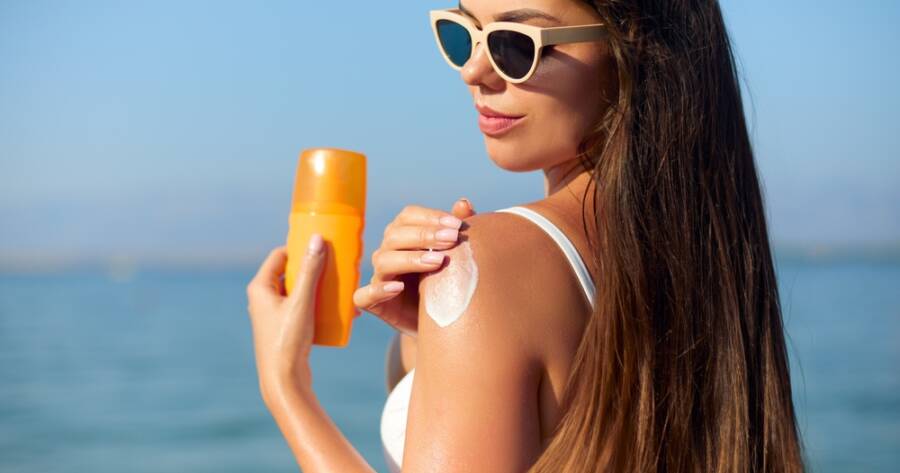Sunscreen is a crucial part of protecting your skin from harmful UV rays, which can cause sunburn, premature aging, and even skin cancer. However, many people unknowingly make mistakes when using sunscreen, reducing its effectiveness and putting their skin at risk. Understanding how to apply sunscreen correctly is just as important as choosing the right product. Here are seven common sunscreen mistakes and how to avoid them.
1. Skipping Sunscreen on Cloudy Days
One of the most common mistakes people make is thinking sunscreen is only necessary on sunny days. Even when it’s cloudy, up to 80% of UV rays can still reach your skin. UV radiation is not limited to direct sunlight and can penetrate through clouds, meaning your skin can still be damaged.
It’s important to apply sunscreen every day, regardless of the weather. Make it a habit to protect your skin, even when it looks overcast. This will help prevent long-term damage and keep your skin healthy year-round.
2. Not Applying Enough Sunscreen
Many people use too little sunscreen, which can drastically reduce its effectiveness. To properly protect your skin, you need to apply a generous amount—about one ounce (the size of a shot glass) for your entire body. If you use less than this, you’re not getting the full protection you need.
To ensure you’re using the right amount, start by applying sunscreen to all exposed areas of your body and reapply every two hours. Pay special attention to areas that are often missed, like the ears, neck, and the back of the hands. These spots are just as vulnerable to UV rays.
3. Applying Sunscreen Only Once in the Morning
Another mistake is applying sunscreen once in the morning and assuming it will last all day. Sunscreen can wear off due to sweating, swimming, or even just normal daily activities. As a result, your protection will weaken, and your skin may be left exposed to harmful UV rays.
To maintain optimal protection, you should reapply sunscreen every two hours, especially if you’ve been sweating or swimming. Choose a water-resistant formula if you plan on getting wet, and remember to reapply after towel drying. Setting a reminder can help ensure you don’t miss a reapplication throughout the day.
4. Using Expired Sunscreen
Many people don’t realize that sunscreen can expire, which means it may not be as effective when you need it most. Sunscreen typically has a shelf life of about three years, but this can vary depending on the brand. Using expired sunscreen can leave your skin vulnerable to sun damage because the active ingredients break down over time.
Check the expiration date on your sunscreen before applying it. If you don’t see one, it’s best to replace it every year. Additionally, store sunscreen in a cool, dry place to avoid compromising its effectiveness. Keeping it in hot environments, such as your car, can reduce its ability to protect your skin.
5. Ignoring Sunscreen on Hard-to-Reach Areas
Many people apply sunscreen to their faces, arms, and legs but forget about other areas that may not be as easy to reach, such as the back of the neck, ears, and feet. These areas are just as exposed to UV rays and should not be overlooked. Neglecting to apply sunscreen to these spots can lead to painful burns and long-term damage.
Make sure to thoroughly cover all exposed areas of your body, including often-missed spots like your scalp, underarms, and the back of your knees. Using a spray sunscreen can help make application to hard-to-reach areas easier, but be sure to rub it in for even coverage.
6. Using Sunscreen with Too Low SPF
While SPF 15 may provide some protection, it’s often not enough, especially for those with fair skin or during prolonged sun exposure. The American Academy of Dermatology recommends using sunscreen with an SPF of 30 or higher for adequate protection.
An SPF 30 sunscreen blocks about 97% of UVB rays, while an SPF 50 blocks about 98%. While no sunscreen offers 100% protection, choosing a higher SPF helps to reduce the risk of sunburn and skin damage. Always opt for a broad-spectrum sunscreen that protects against both UVA and UVB rays for the best defense.
7. Forgetting About Lip Protection
While most people remember to apply sunscreen to their face and body, they often forget about their lips. The skin on your lips is thin and sensitive, making it more vulnerable to sun damage. Over time, this can lead to dry, cracked lips, or even more serious conditions like sunburned lips or skin cancer.
To protect your lips, use a lip balm with SPF 30 or higher. Reapply it frequently, especially after eating or drinking, as it can wear off more quickly on the lips. There are also tinted lip balms with SPF available, which can provide both color and sun protection.
Sunscreen Is Essential—But Only If Used Correctly
Protecting your skin from the sun is one of the most important steps in maintaining healthy, youthful skin. However, many common mistakes, such as not reapplying sunscreen or using too little, can lead to sun damage over time. By avoiding these mistakes and using sunscreen properly, you can significantly reduce your risk of skin problems.

